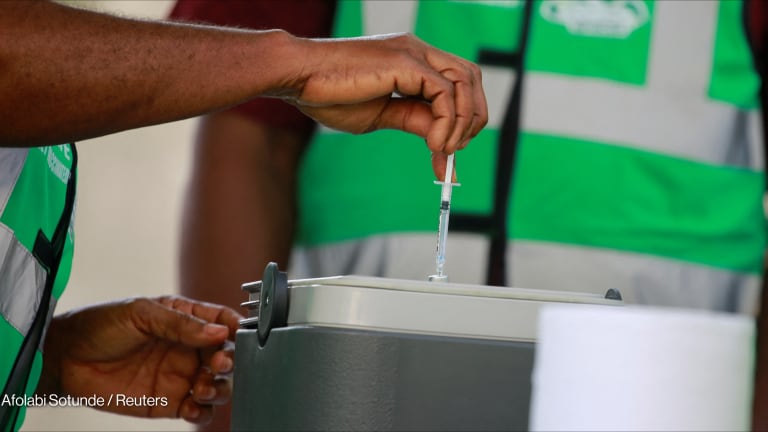
GABORONE, Botswana — Experts are calling for more study of the COVID-19 pandemic in Africa as ongoing data analysis points to differences in how it is playing out on the continent.
Speaking at a World Health Organization press briefing last week, professor Mark Woolhouse, director of Tackling Infections to Benefit Africa, a research partnership that has been analyzing data on the pandemic, said the group’s findings so far point to unique characteristics within Africa.
“Africa has had its own epidemic … I have worked very closely with the epidemic in the U.K. and elsewhere in Europe as well [and] they are different. They have different characteristics so I think there are going to be lessons to be learned from all this data from Africa for Africa,” he said.
Current data from WHO-Africa shows that the pandemic has largely affected a younger age group. Roughly 91% of COVID-19 infections in sub-Saharan Africa are among people under the age of 60, and more than 80% of cases are asymptomatic — far higher than the estimated proportion of asymptomatic cases from studies elsewhere in the world.
“It is up to us to characterize this disease in Africa and not look for comparison with other countries or use other countries' statistics to project our own characteristics.”
— Dr. Sam Okuonzi, chairperson, Arua Regional Referral Hospital management boardSpeaking at the press conference, Dr. Sam Okuonzi, chairperson of the hospital management board at Arua Regional Referral Hospital in Uganda, noted that the initial predictive COVID-19 models were based on European populations. As such, the rate of transmission and severity of the pandemic has not played out in line with these predictions in Africa.
He said that predictive models based on African statistics and trends were needed to inform projections and policy-making.
“It is up to us to characterize this disease in Africa and not look for comparison with other countries or use other countries' statistics to project our own characteristics. What we need is data, we need to analyze trends and we need analytics,” he said.
Okuonzi pointed to various social and environmental factors as possible reasons for the low transmission and disease severity rates across the continent.
“Factors for a lower transmission and disease severity rate in the continent may include, for example, a youthful population, possibly an inherent immunity, possibly something to do with temperature and altitude, possibly something to do with better population response because we have a lot of experience from Ebola and other diseases and people are prepared for some of these diseases,” he said.
COVID-19 on the African continent:
► Cautious optimism in South Africa that COVID-19 surge is over
► Politics gets in the way of Nigeria's COVID-19 response
► Muddled messaging around COVID-19 complicates response in Tanzania
Panelists at the briefing agreed that underreporting of cases may also be a factor in the continent’s low recorded transmission rates — antibody testing is underway in some countries to check if large numbers of infections are being missed — but Okuonzi argued that the number of recorded deaths was likely an accurate reflection of the situation on the ground as these cases are more visible.
“You cannot suppress deaths … and [so far there] are very few,” he said.
According to WHO statistics, the Africa region accounts for just 3% of coronavirus-related deaths globally.
Dr. Matshidiso Moeti, WHO regional director for Africa, agreed, adding that experience from previous pandemics shows that communities tend to report a large number of deaths through the health system.
“We are not seeing evidence of excess mortality due to COVID-19 or missing deaths, and we believe that. Even though we acknowledge that death registration in most of our countries is a problem, we have seen in previous outbreaks, like the West Africa Ebola outbreak, that when communities start to see many numbers of people dying of a particular pattern of illness they report this at some point of the health system,” she said.









